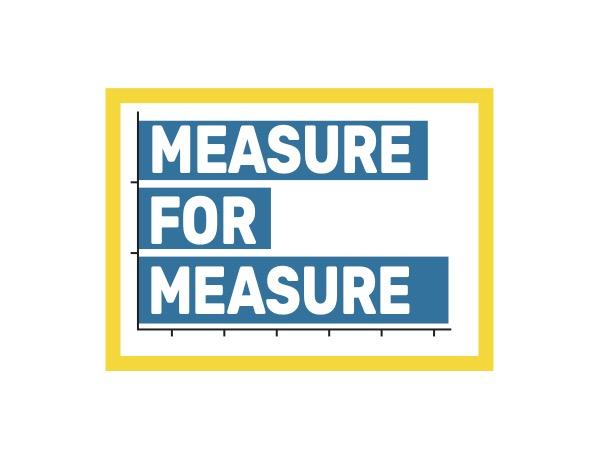Sweating the Big Stuff for Small Nonprofits – Plus New Jobs Numbers

In the first few months of the pandemic, I often heard speculation about the extent to which shutdowns, event cancellations, social distancing, and a reluctance to travel would affect the finances of different arts organizations. Some contended that only the largest organizations, with their steady endowments and loyal patron lists, would power through. Others pointed to the inflexible cost structures of those organizations and argued that smaller and nimbler entities would recover faster over time.
These debates are not over yet. We still need better and more comprehensive data to understand factors predisposing some arts organizations versus others to survive and even thrive amid exogenous shocks such as COVID-19. For now, to quantify the pandemic’s economic impacts on nonprofit arts organizations large and small, one can turn to a new report from the Urban Institute.
Titled Nonprofit Trends and Impacts 2021, it draws from a nationally representative survey (the Nonprofit Panel Dataset Project), a research partnership with American University, George Mason University, and Georgia Tech University. According to the survey results, 54 percent of all arts nonprofits reported losses in total revenue in 2020, compared with 36 percent of all other types of nonprofit.
Both in terms of contributed and earned income, arts nonprofits showed sharper declines in 2020 than did other nonprofit organizations. Compared with the period of 2015-2019, when 13 percent of arts nonprofits reported declines in overall donations, 43 percent did so in 2020. Losses from “fee-for-service income” sources, meanwhile, were the greatest for arts organizations than for other nonprofits; in 2020, the median arts nonprofit posted a 50 percent loss in fee-for-service income.
In contrast to other sectors, the smallest arts nonprofit organizations were among those most likely to report decreases in donations in 2020. Fifty-seven percent of arts nonprofits with budgets below $100,000 reported decreases, compared with 27 percent of arts nonprofits with budgets of $1 million and above. (Even the share of mid-sized arts nonprofits reporting such decreases was relatively high—48 percent of organizations with budgets between $500,000 and $999,999 and 40 percent of those in the $100,000-$499,999 budget category.)
Ultimately, the largest nonprofits within any sector except Education were the least likely to have experienced decreases in donations. Across all sectors, the largest arts nonprofits in 2020 were the most likely to have seen donations increase: 65 percent of arts nonprofits with budgets of at least $1 million fell into this category—the greatest share of organizations by budget size within any sector.
The report does not linger on the disparity between large and small organizations, in terms of access to philanthropic funding. It does observe, however, that “younger and less-established organizations are likely to be more affected when donors retrench than older and larger organizations that have had time to establish themselves in a community and can benefit from their reputations and community trust.”
“Indeed,” the report continues, “we often find that size is an important factor in organizational sustainability during crisis; the smallest organizations were more vulnerable to economic shocks and donation trends in 2020.”
Another entity that has been monitoring the post-pandemic health of the nonprofit sector is the Center for Civil Society Studies at Johns Hopkins University. According to the center’s analysis of data from the U.S. Bureau of Labor Statistics (BLS), nonprofit organizations in the “arts, entertainment, and recreation” industries gained 6,700 jobs in September 2021, up 11.3 percent since August 2020. Yet this nonprofit industry group still remains down by about 52,000 jobs (or -15 percent) since February 2020.
Widening the lens to capture not only nonprofit organizations, but all arts/entertainment/recreation businesses, another BLS data source shows that the total number of workers who voluntarily left jobs in this industry group was 124,000 in September 2021—up from 64,000 in January 2021. Moreover, between August and September 2021, arts/entertainment/recreation saw an increase of “quits” (+ 56,000) that was among the largest for any industry group. Conclusively, then, arts groups are not immune to the Great Resignation.
Part of the long-term value of longitudinal datasets for arts and cultural policy is that they allow us to answer questions behind the questions. Are arts workers for nonprofits quitting at proportionately high rates, relative to workers in other sectors? If so, then which subgroups are most likely to quit, and owing to what causes? While the 2020 nonprofit organizational data do not address this topic, they do indicate that among nonprofits as a whole, full-time employment remained stable. On the other hand, part-time staff and volunteer numbers dipped from 2019 levels—especially in rural communities.
This last development should be monitored closely, as volunteers, part-time staff, and contractors (read: artists) are the lifeblood of many arts organizations. But then, the pandemic has altered every function of the nonprofit arts sector, not only fundraising and employment. As the crisis evolves, arts and cultural researchers will want to look for future insights from data sources such as the Nonprofit Panel Dataset Project—a platform that currently enjoys support from the National Science Foundation and other funders—to better identify pain points in the sector and how they best can be remedied.
Sunil Iyengar directs the Office of Research & Analysis at the National Endowment for the Arts.




